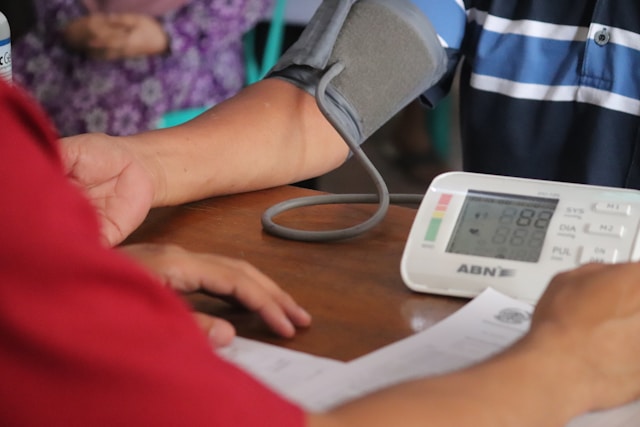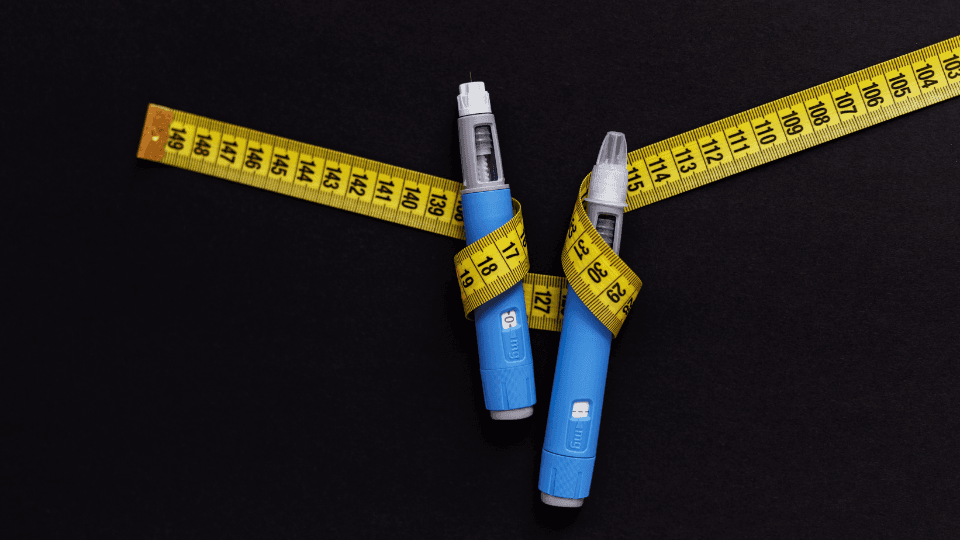Back
Apr 28, 2023
VO2 max: The fifth vital sign

Dr Jarrad Van Zuydam | Sports Physician
Grey's Anatomy fans will attest to the number of times they've heard someone in a white coat shout, "What are their vitals?"
Every medical examination starts with measurement of the patient's vital signs, and for good reason.
What's so vital about these signs?
Vital signs are measurements of the body's most basic functions that doctors use to detect or monitor medical conditions. A quick survey of a patient's vital signs can reveal a lot about their health.
1. Body temperature
Body temperature is anywhere between 36.5 and 37.2 degrees C in a healthy adult. Abnormal readings can indicate an infection or other illnesses.
2. Pulse rate
Most people have a pulse rate at rest of 60 - 80 beats per minute. Many diseases and substances can cause the pulse rate to either speed up or slow down. Trained endurance athletes can have a resting pulse as low as 40 beats per minute because of their superior cardiovascular systems.
3. Breathing rate
At rest, most people take 12 - 18 breaths per minute. Rapid breathing may be a sign of lung problems or diseases affecting other organ systems.
4. Blood pressure
Blood pressure is the pressure measured in the arteries both while the heart is squeezing (the top number) and relaxing (the bottom number). 120/80 is a normal blood pressure. High blood pressure is a major risk factor for the development of cardiovascular disease.
Do we really need another vital sign?
Well, yes.
In 2016, the American Heart Association published an article that laid out the case for using fitness as a vital sign.
In it, they proved that:
Low cardiorespiratory fitness (CRF) is just as strong a predictor of death as risk factors like cigarette smoking, high blood pressure, high cholesterol, and type II diabetes.
Higher fitness levels are associated with increased survival.
Most of the risk reduction can be had just by moving out of the least fit group. In other words, a little exercise goes a long way.
Small increases in fitness are associated with considerably (10% to 30%) lower heart attack and stroke rates.
Efforts to improve CRF should become a standard part of any visit with a doctor.
Since then, the evidence just keeps piling up. In 2022, an extensive study with over 2 million participants concluded that being in the top ⅓ of cardiorespiratory fitness decreases your risk of death by 45% compared to being in the bottom ⅓.
That deserves to be repeated. Being in the fittest ⅓ of people slashes your risk of death in half when compared to the least fit ⅓ of people.
What does this have to do with VO2 max?
VO2 max is a measure of how well your body consumes and uses oxygen during exercise. It's widely considered the gold standard for measuring CRF. The higher your VO2 max, the better your body is at delivering oxygen to your muscles and using it efficiently. A high VO2 max requires efficient lungs to get oxygen into the blood, healthy blood and blood vessels that can carry lots of oxygen, a strong pump to move the blood to the working muscles, and healthy muscles that can extract and use the oxygen to burn fuel. A high VO2 max translates to better endurance performance, faster recovery, and improved overall health.
How do I know what my VO2 max is?
We can only measure VO2 max accurately in a specialised laboratory setting by tracking the amount of oxygen you consume while exercising at increasing levels of intensity. But if you aren't a pro athlete, you don't need that level of accuracy.
There are simpler ways to estimate your VO2 max without needing expensive equipment and expertise. One way to do this is by using a heart rate monitor and performing a submaximal exercise test, like the 1-mile walk test or the step test. Wearables such as Polar and Garmin use similar algorithms to give a reasonable estimation of VO2 max.
Another way is to use online calculators that consider factors such as age, weight, and activity level to estimate your VO2 max.
Once you have your number, you can compare it to the normal values for your age and gender.
How do I boost my number?
If you're looking to increase your VO2 max, and you should be, there are a few pointers to keep in mind.
This is one area where cardio training trumps strength training. While building muscle strength has several important benefits and should definitely be part of your exercise regime, it won't do much to improve your VO2 max. Be sure to engage in regular aerobic exercise, like running, cycling, or swimming. Aim for at least 150 minutes of moderate-intensity exercise (or 75 minutes of vigorous-intensity exercise) per week.
Any cardio exercise that is not a doddle will help your VO2 max to some extent, but the largest gains are to be had when you ramp up the intensity. High-intensity interval training (HIIT) is a great option to boost your VO2 max without spending hours on the treadmill. Working at close to your maximum for periods of 3 - 6 minutes at a time interspersed with rest intervals is a sure-fire way to give your fitness a nudge.
If that sounds like cruel and unusual punishment, would you consider exercise sessions of just 2 minutes? In 2019, researchers investigated whether a 2-minute workout could improve fitness relative to a control group with a sedentary lifestyle. Participants completed a 2-minute workout featuring three short 20-second intervals, three times per day, three days per week, for six weeks. The programme resulted in a 5% increase in VO2 max - talk about bang for buck!
It doesn't take much to make gains in your VO2 max. All you need to do is make a start. It might just be your ticket to a long and healthy life.













